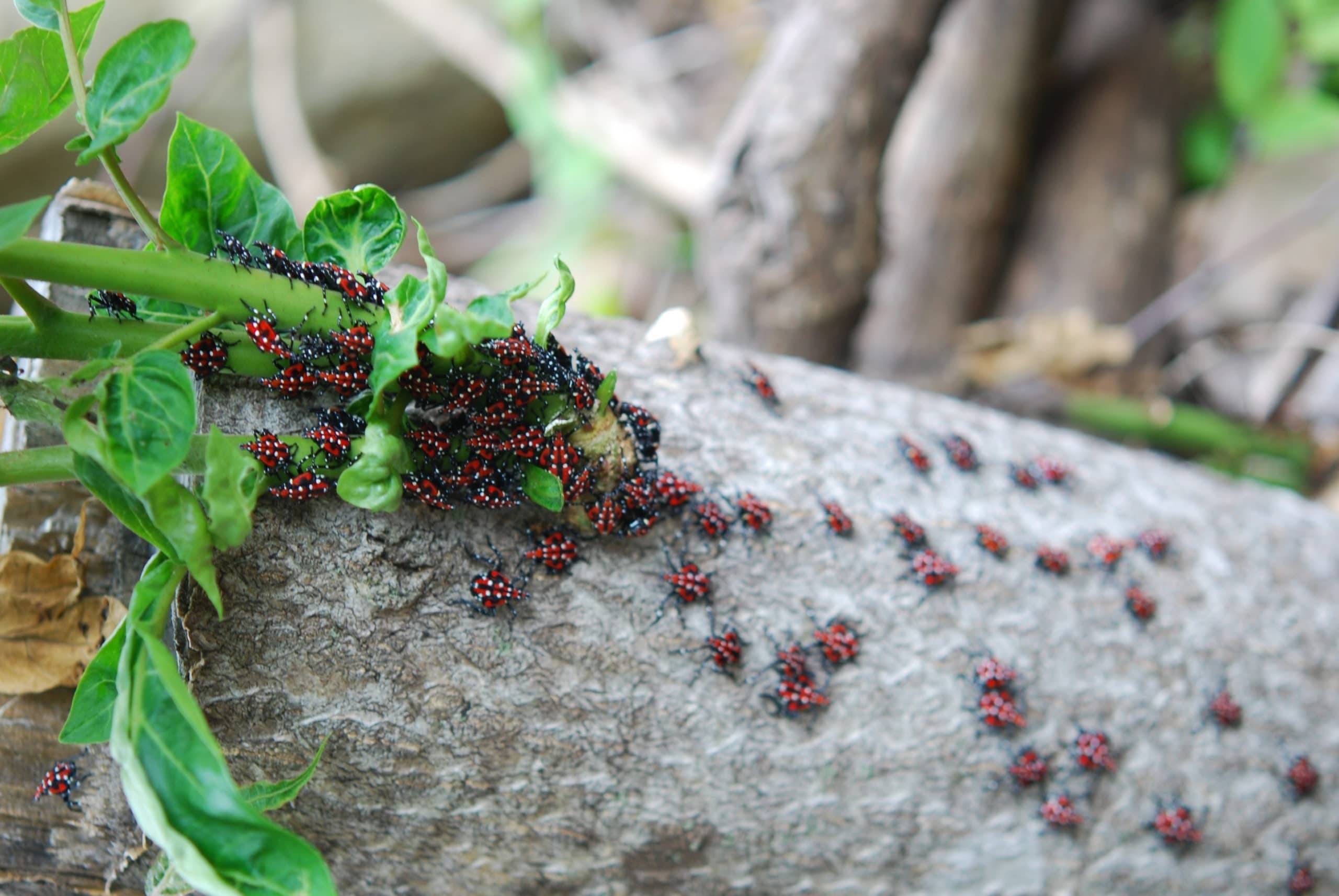The spotted lanternfly is a landscape-level invasive pest, feeding on more than 70 plant species. Photo by Lawrence Barringer, Pennsylvania Department of Agriculture, Bugwood.org
Combating Invasive Species in the Blue Ridge
When Rod and Maggie Walker visited the Blue Ridge Mountains of Virginia for the first time, they immediately fell in love with the area. Before long, they were looking at property and considering a permanent move. They eventually settled on a property that backs up to Shenandoah National Park.
“When we bought it 20 years ago, we noticed these little vines in three or four places growing up trees,” Rod said. “We didn’t really realize at the time how impactful this was going to be. Fast forward 15 years, you could not walk into it any more than you could walk through a wall. The trees were coming down because the vines were pulling them down. We literally had to start with bulldozers to cut paths to get to the vines and work on them.”
This vine, oriental bittersweet, is one of several invasive species that took over the Walker’s yard. Today, they actively manage between 12 to 15 different invasive plant species on their property, including:
- Vines: Japanese honeysuckle and mile-a-minute
- Trees: Ailanthus (aka tree of heaven) and paulownia
- Shrubs: autumn olive, Japanese spiraea, Chinese privet, and lespedeza bicolor
- Ground Layer Plants: Chinese lespedeza, garlic mustard, lady’s thumb, Japanese stiltgrass, johnsongrass, lesser celandine, Arthraxon, and wavyleaf basketgrass
The Walkers choose to prioritize vines on their property, a personal preference based on their situation. The vines grow up the trees, robbing them of sunlight and adding extra weight.
“People have a tendency to look at what’s out there and think if it’s green, it’s good,” Rod said. “But the vines will literally take down the forest canopy. To replace the canopy can take decades. Once you take down the trees, now the sunlight gets to the forest floor and all the rest of them will go crazy. Trying to preserve the forest canopy for us on our property is job number one.”
But the problem is not limited to the Walker’s property. As they spoke with their neighbors, they began to realize how the problem didn’t care about property and county lines.
It Starts With You
Working with Jake Hughes, the invasive plants manager for Shenandoah National Park, the Walkers formed Blue Ridge PRISM (Partnership for Regional Invasive Species Management) in 2014. The goal of the organization is to help manage invasive plant and animal species across jurisdictions on a regional level.
“If you’re a landowner and you do this work on your property, your next big problem is defending your borders,” Rod said. “What better way to defend your borders than to get your neighbors to do it too. The idea is to try and get as many people as possible aware of the issues and equipped with the knowledge and connections to deal with it most effectively.”
Once introduced to an ecosystem they are not native to, whether on purpose or not, an invasive species can quickly take over a landscape.
“Where they came from, there are animals, insects, diseases, and other things that keep them in check,” Rod said. “They’re just a part of the equilibrium in that ecosystem. When you bring that plant here, the ones that become invasive go crazy because there’s literally nothing to keep them in check. They multiply out of control. So that kudzu you see growing alongside the road, unless somebody does something, it’s just going to keep growing.”
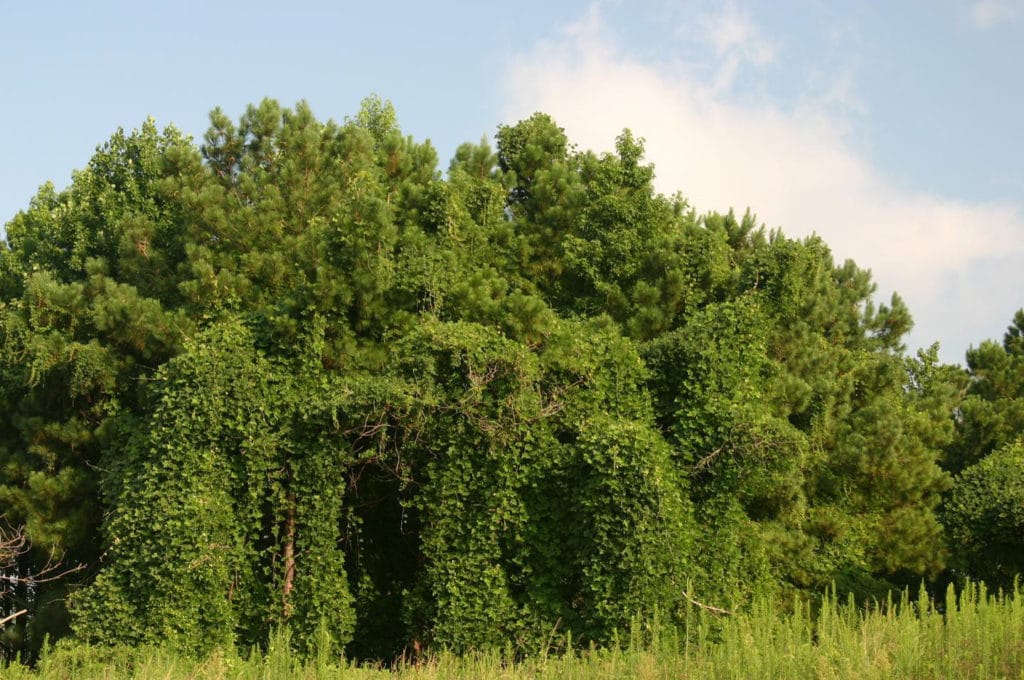
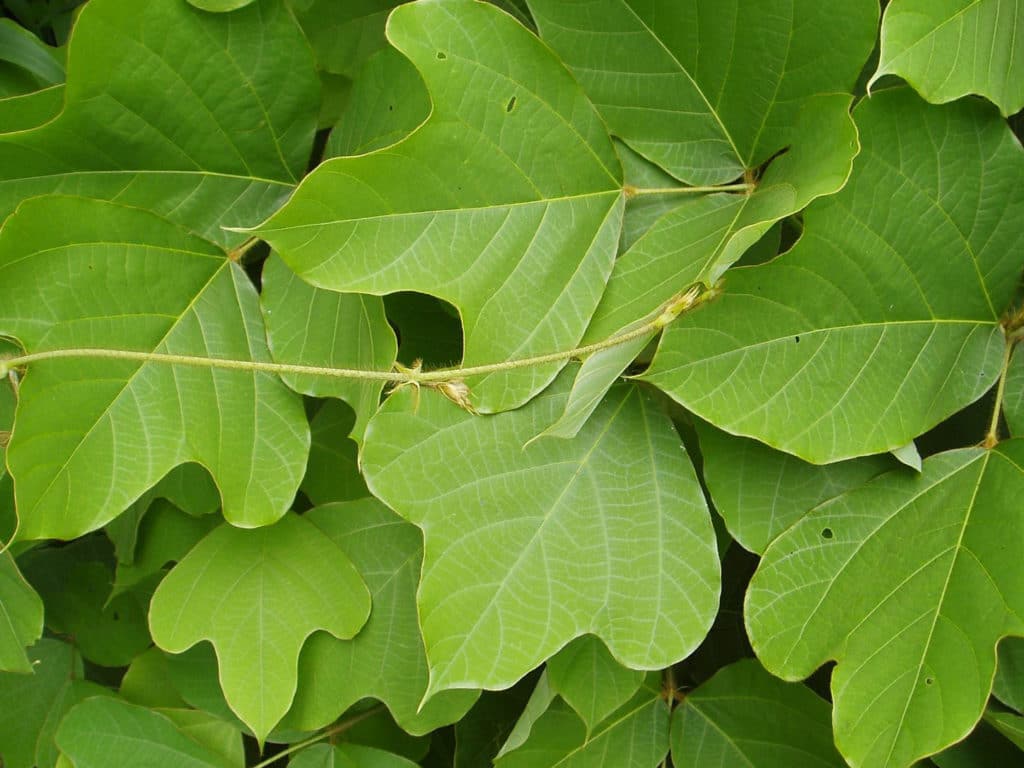
Invasive plants have further implications for species that depend on the native flora and fauna for food and habitat. Because invasive species don’t provide the right kind of conditions, native species are pushed out to places where they can find the right conditions for their survival.
To combat these effects, the Walkers are returning native plants to their yard. They’ve witnessed swarms of monarch butterflies coming to their garden of blue asters, a native Virginian species.
“They’re doing what they’re supposed to do,” Maggie said. “They’re eating their food. The right plant was there for them. It was an amazing experience to see this. Bringing the natives home is a popular saying at this point. We’ve been putting in all kinds of garbage, allowing a lot of things that are invasive into our gardens. If you can go to native plants, it can change the world.”
The Walkers said they’d like to see more retailers labeling plants as native or nonnative so that consumers have all the information needed before buying.
Beyond their yard, the Walkers and Blue Ridge PRISM provide educational materials, workshops, and consultations for others in the area to learn more about these issues. They are working with the Virginia Department of Transportation to manage plantings along the more than 50,000 miles of roadside in the state. “If you look at what’s on their planting lists, it includes a lot of nonnative plants, including some that are listed by the Department of Conservation and Recreation as invasive,” Rod said.
This disconnect between agencies, land managers, and the research can be found all over the country. Because invasive species easily cross arbitrary property lines and jurisdictions, coordination is the key to slowing their spread. Over 100 Cooperative Weed Management Areas like Blue Ridge PRISM exist across the U.S. to help a variety of partners collaborate and target invasive species in a geographical area.
Jackson Landers, a journalist and author of Eating Aliens: One Man’s Adventures Hunting Invasive Animal Species, spent a year and a half researching and studying invasive animal species. He said that although invasives feel like a monumental challenge to overcome, each person can take responsibility for a small piece of it.
“There’s something really important and profound, I think, about saying this is my couple of acres that I’m going to take responsibility for, even though I can’t solve this bigger problem,” Landers said. “This is my little piece of the world that I’m taking responsibility for. You can do that in your backyard or a public park that has invasive plants where you can go gather them, subject to the rules of the park. Or if there’s a wildlife management area, you can say this is my couple of acres and I’m going to remove invasive species here.”
The hard part is accepting that we will probably never be able to fully eradicate many of these species.
“When you’re managing an invasive species, it’s not always a zero-sum game,” Landers added. “It’s not always can we completely remove it. Sometimes it’s can we depress the numbers enough that something in danger doesn’t go extinct. Can you create some little habitat where a species that’s endangered because of invasive species can exist?”
Using Technology to Combat Invasive Species
Working a grant from the Natural Resource Conservation Service, Blue Ridge PRISM is funding a PhD student at UVA to study where invasive species are found in the area. Using a drone with cameras attached, they hope to be able to map where these plants are, especially in hard-to-reach places where there is not a lot of human interaction.
“We’re trying to prove that you can fly this over an area, gather the light that is reflected from the plants, differentiate the plants because of the different spectral signatures, and then produce a map of plant by plant,” Rod Walker said. “It would show all of the Ailanthus or all the kudzu on the property.”
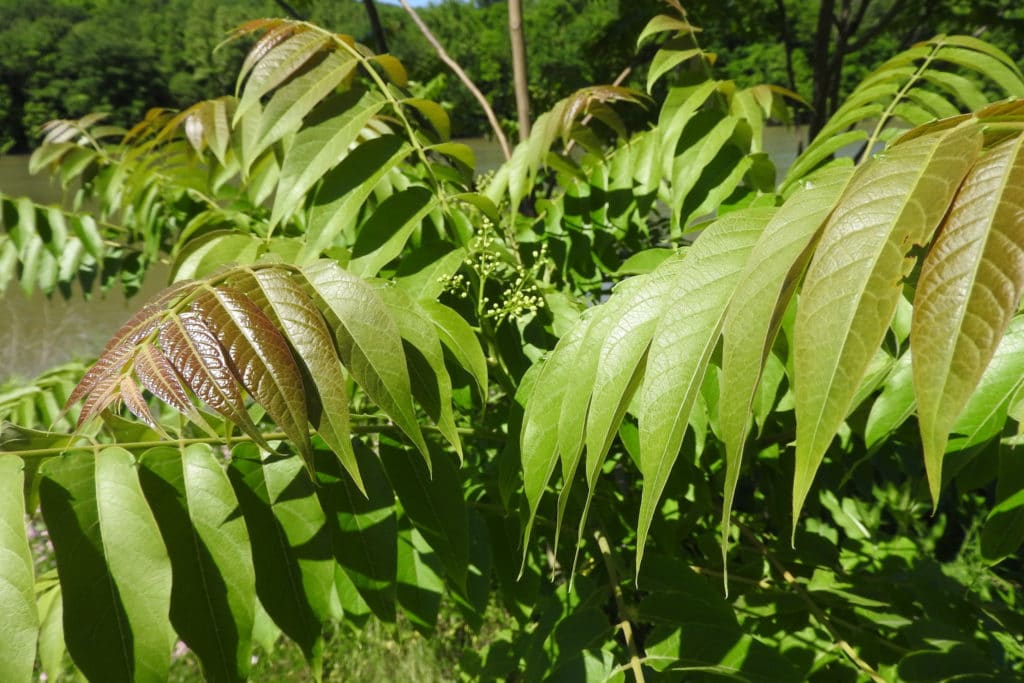
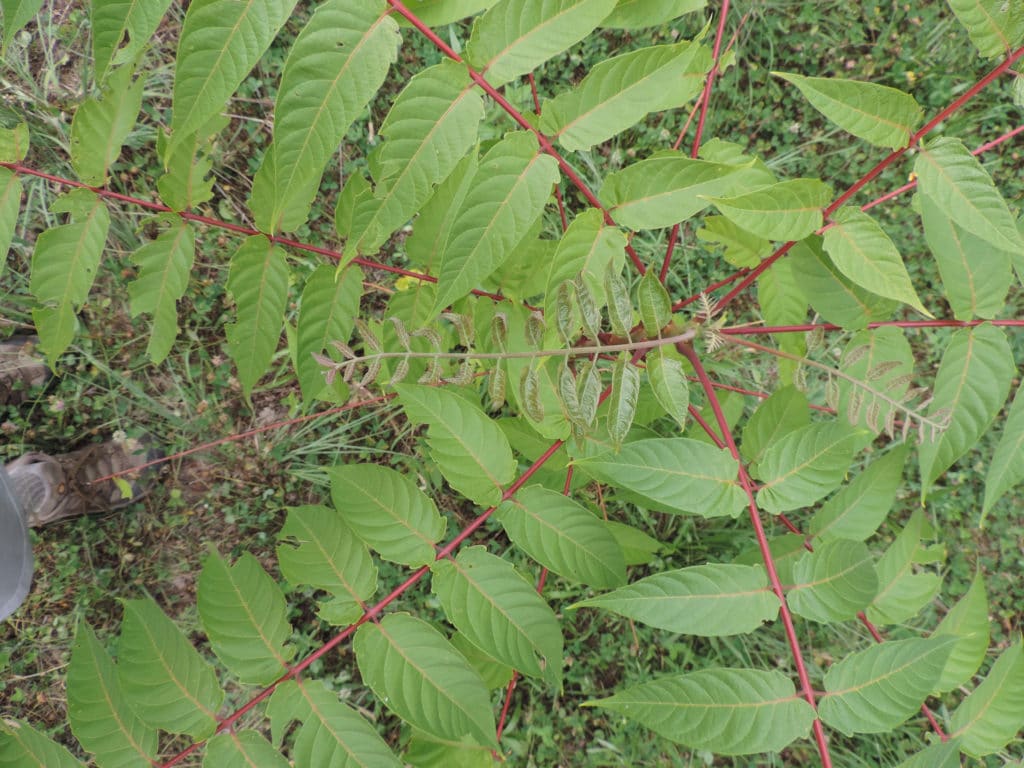
In gathering this data, land managers would have a better understanding of what areas need the most work in combating invasive species.
“It’s kind of like climate change,” Walker said. “It comes along slowly. You don’t really realize it’s happening. People are going to debate whether it’s happening. So, let’s try to get some science into this topic so we can all look at it more objectively.”
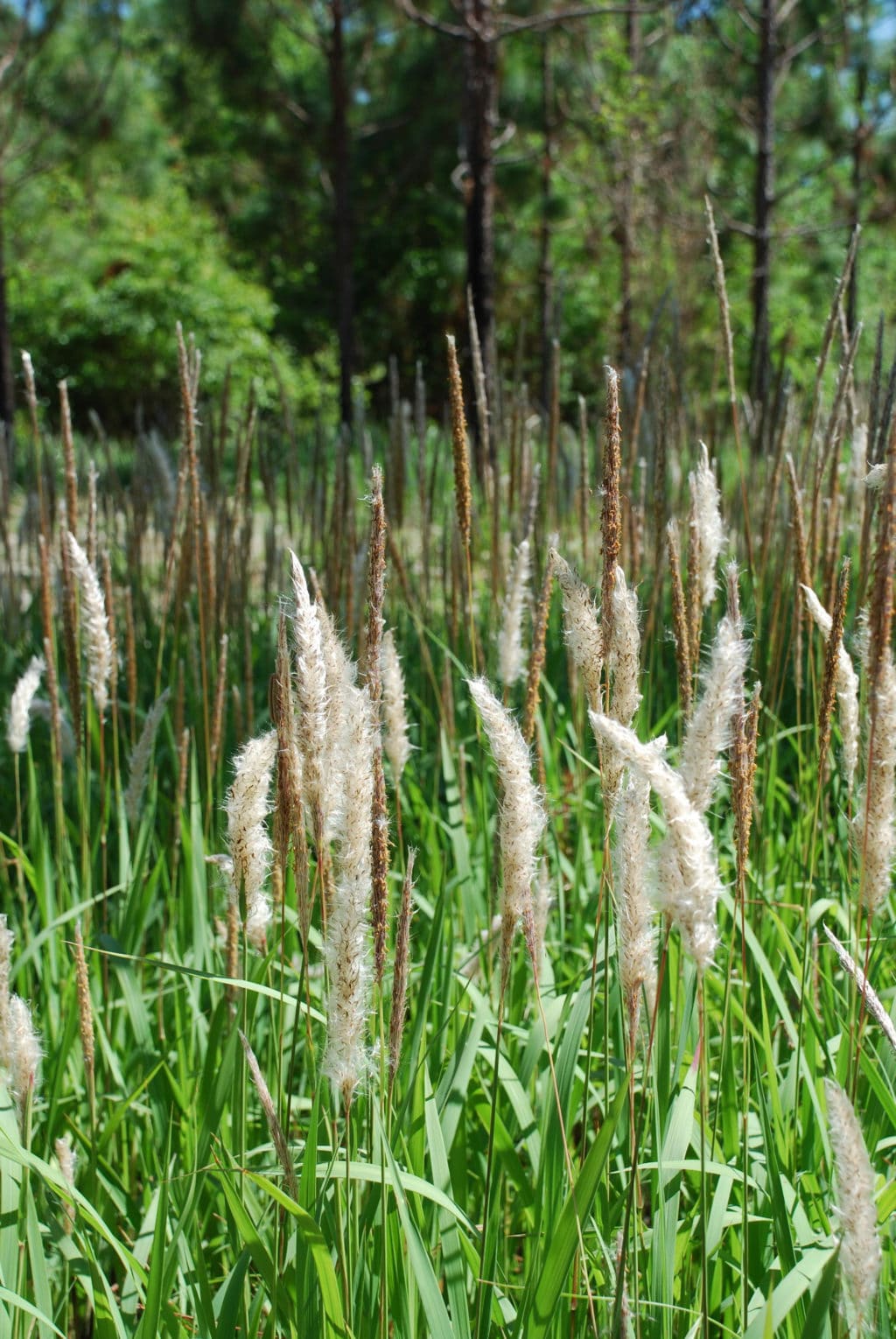
Blue Ridge PRISM is far from the only organization looking at this problem. Down south, the Bugwood Center for Invasive Species and Ecosystem Health at the University of Georgia is involved in collaborative efforts between state, federal, and international partners to study invasive species, pest management, and forest health.
Chuck Bargeron, the center’s co-director, helped design and develop the online Bugwood image database that provides scientists and the public access to information about invasive species, detection, and eradication methods. Now, they are moving into smartphone apps.
“A smartphone is a perfect tool because it has a camera,” Bargeron said. “It has a GPS. You can collect information and submit it. We started building smartphone apps to allow people to easily report things from the field.”
They have created dozens of apps for researchers and citizen scientists to collect and share information. The Southeast Early Detection Network allows users to submit observations from the field, helping map out where invasive species have been found. The Squeal on Pigs app brings users information on feral pigs and report sightings.
“I think, unfortunately, invasive species are a very critical environmental issue that doesn’t seem to get enough attention,” Bargeron said. “Other than these insects that pop up and do a lot of damage, like emerald ash borer, it doesn’t seem to be something we pay as much attention to in the Eastern United States as they do in some of the western states, especially some of the plant issues. I think it’s because it is affecting agriculture more in the West than some of the problems we have.”
The more the public is aware of these issues and can report sightings, the better chance researchers and land managers have of getting an accurate picture of where these invasive species are in the region.
Case Study: The Spotted Lanternfly
One of those species land managers, scientists, and other interested parties are keeping a close eye on is the spotted lanternfly. Native to parts of China, Vietnam, and Indonesia, the spotted lanternfly was discovered in Pennsylvania in 2014, although it was probably around for a year or two before then. Researchers believe the species came to the U.S. as an egg mass attached to imports from that region.
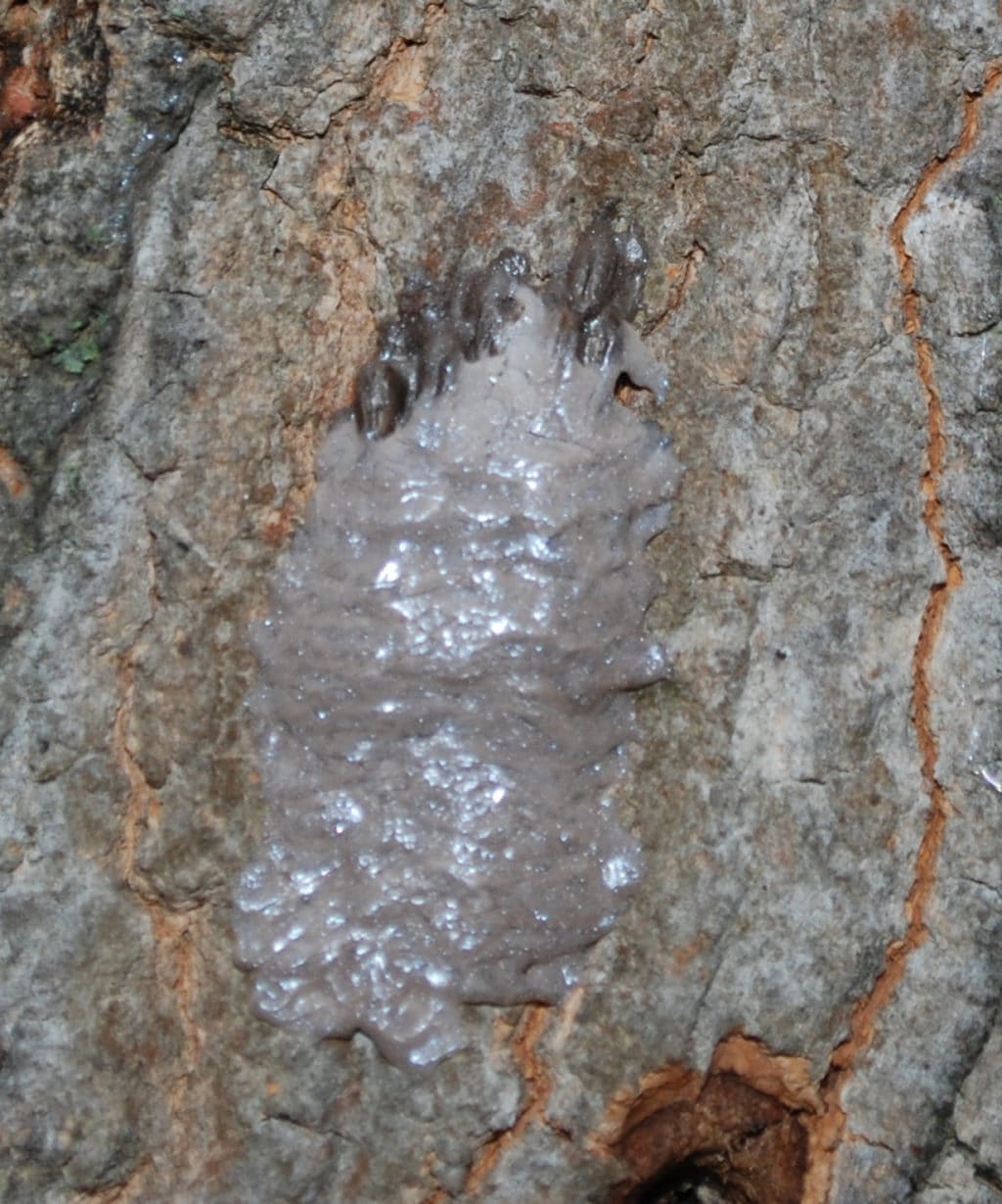
“They [egg masses] look really cryptic,” said extension associate Heather Leach. “They look like a splash of mud basically. It’s not something that you would see and immediately identify as a potentially devastating invasive insect.”
Two years ago, Penn State Extension hired Leach to specifically focus on the spotted lanternfly. Although they don’t typically hire someone to focus on a single bug, there are enough stakeholders affected by this invasive species to make it worth it.
The spotted lanternfly is a planthopper that feeds on more than 70 different plant species, classifying it as a landscape-level pest. This includes grapevines, hardwoods, and apple trees.
“Almost everything out there is fair game for them to eat,” Leach said. “So, it’s like this wonderful buffet that it has options to.”
They feed on the plant fats, extracting the nutrients they need, and then excreting the excess sugars they don’t use. They secrete a honeydew material that builds up wherever they are feeding.
“Because there are so many of them, they’re so big, and they eat so much, you get lots of honeydew,” Leach said. “That’s basically sugar water out in the environment that stays there, and mold will start to grow on that. People’s cars, patio furniture, and all these other areas will be covered with this sticky and mold-like substance.”
The species continues to spread through the egg masses they lay. Although you will typically find these masses on the underside of branches and vines where the lanternflies are feeding, they have been found in many creative places.
“Because the public is so aware of this pest, they often post images of where they’ve seen egg masses,” Leach said. “I’ve seen egg masses on the inside cover of a grill, on patio furniture cushions, outdoor light bulbs. They lay everywhere.”
In addition to Pennsylvania, the lanternfly has now spread to parts of New Jersey, Delaware, and Virginia. These states have issued quarantine orders for the counties where the pest has been found. It asks residents to check their vehicles for the egg masses and hatched lanternflies before traveling to locations where the lanternfly has not previously been reported.
It is advised if you find it in a place where it has not be recorded before, kill it if you can and then report to your local extension office. Although the lanternfly is easy to kill, whether you squish an egg mass or swat an adult, total eradication of the species is unlikely.
“Right now, our best control method is the use of insecticide,” Leach said. “For the short term, that’s okay. But for the long term, environmentally, ecologically, economically, it’s just not sustainable so we need other options.”
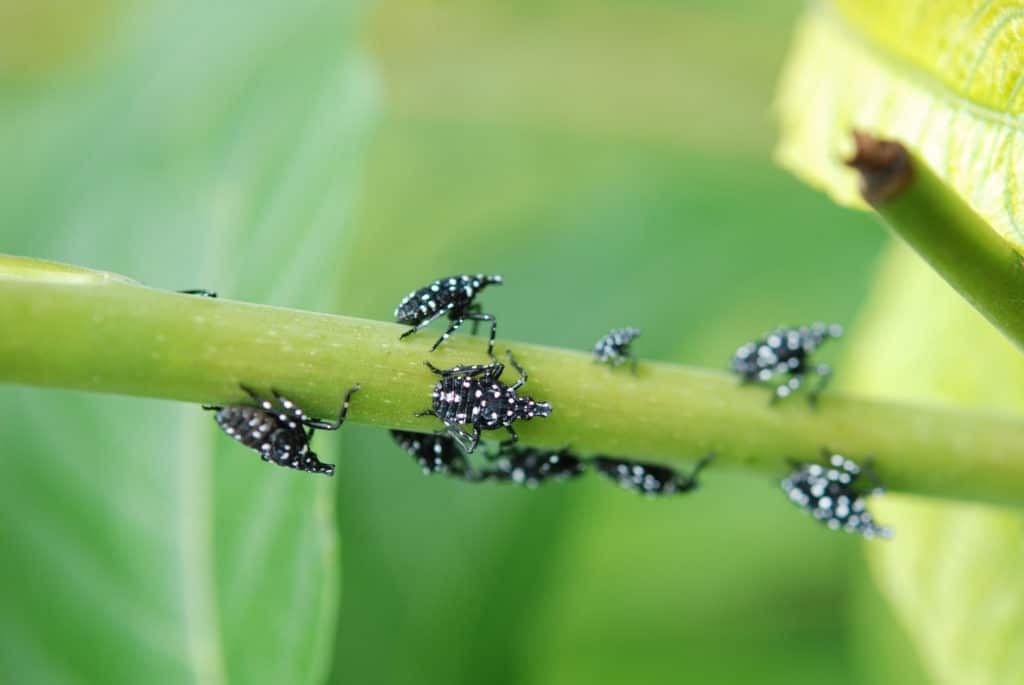
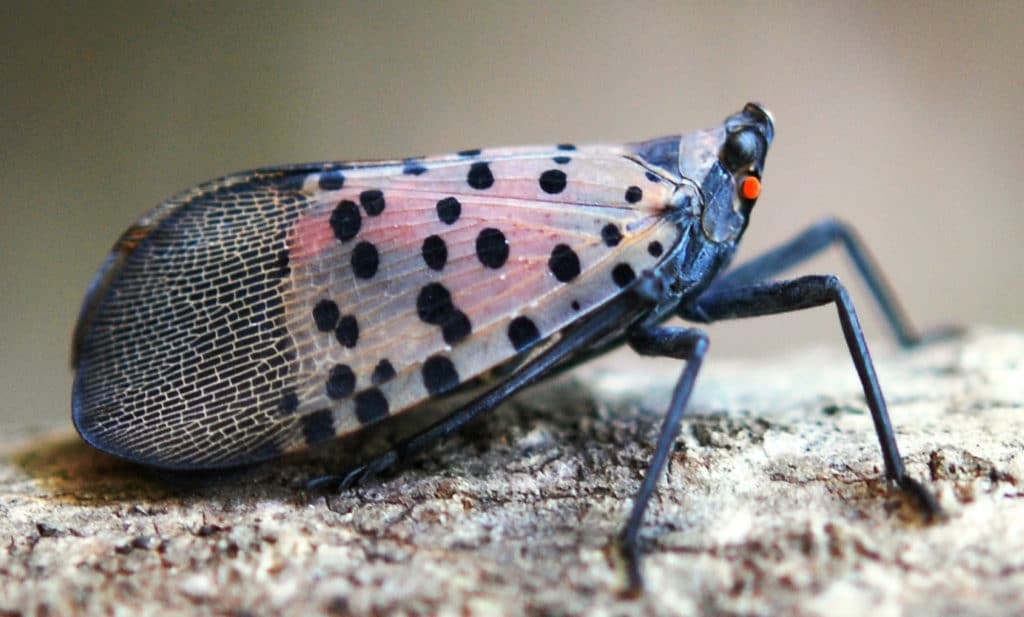
Dr. Kelli Hoover, a professor of entomology at Penn State, studies invasive forest pests. She’s currently focusing on how spotted lanternflies will impact a forest’s health and methods to control its spread.
“Invasive species can cause a lot of economic impact,” Hoover said. “When we look at what’s happening with spotted lanternfly right now, it’s devastating vineyards. It has a strong feeding preference for grapes among other things. So, they’re causing a lot of economic losses to the grape industry. I can tell you that California is scared to death of this thing coming out there.”
The Pennsylvania Department of Agriculture estimates the spotted lanternfly directly threatens $18 billion of Pennsylvania products, including the wine, craft beer, and nursery plant industries. Beyond the monetary value placed on the destruction, the lanternflies are a major nuisance for anyone who enjoys going outside. Videos from infested areas show the pests taking over backyards, sidewalks, and forests.
“People have done some crazy things,” Hoover said. “There have been people who have been so frustrated with this thing that they have put lighter fluid on their tree and lit it on fire.”
(Officials do not recommend this as a way to get rid of the pest.)
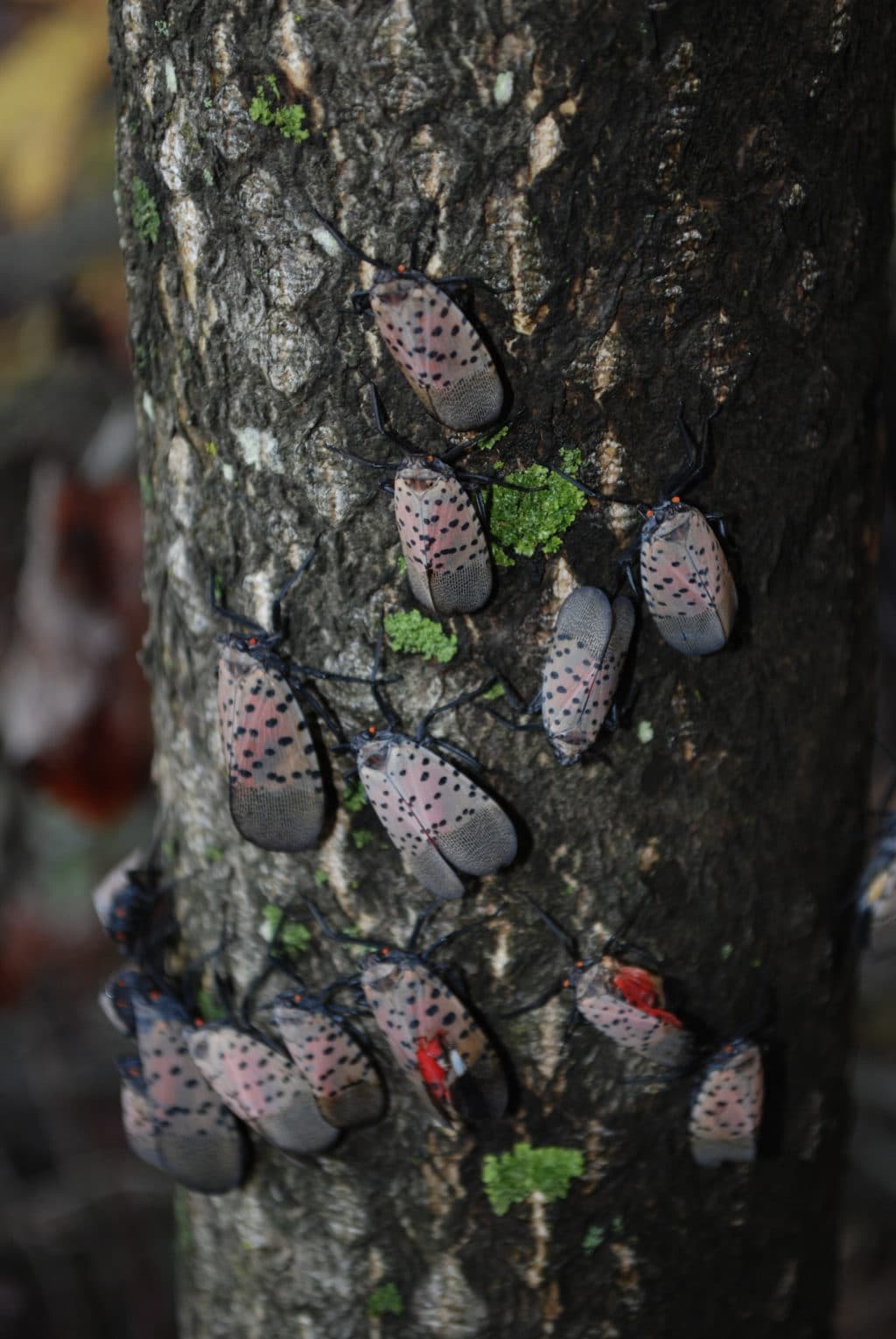
Hoover and others are studying ways in which the species can be slowed down or contained. Some farmers report spraying their crops with insecticides as often as every three days to protect their yields. They are focusing their research on other potential methods, such as using a naturally occurring fungus to kill off the species. Scientists are also studying the lanternflies relationship with tree of heaven, another invasive species though to be a preferred host.
“The fact that it moves a lot makes it difficult because it’s not like a pest in an agricultural field where you can just go in and treat,” Hoover said. “It’s not there and then it is, as the vineyards will tell you. You can’t plan ahead that far. You do everything you can. But how do you make a vineyard less attractive?”
Humans are effective movers of the insect, transporting the species across counties and oceans, on cars, trains, and goods.
With international economies increasingly connected, how do you stop an invasive species in the first place? There, the research turns to packaging materials that can keep invasives out in the first place as goods are shipped around the world.
“With world trade, this is just going to happen,” Hoover said. “So, what do we do? People need to be informed. People need to be aware of what this insect looks like. By people paying attention to regulations that say you’re not supposed to carry fruit in your luggage from Hawaii to the mainland, that kind of thing is really important to pay attention to to avoid these problems happening in the first place.”
Case Study: The Northern Snakehead
If you spend a lot of time fishing in the Blue Ridge, chances are you’ve heard of the Northern Snakehead. Or maybe you’ve heard about restaurants serving this invasive fish to help cut down on population numbers.
Mary Groves, the Southern Region Inland Fisheries Manager for the Maryland Department of Natural Resources, said they believe the northern snakehead was introduced to the Potomac River as a food source from its native Russia, China, North Korea, or South Korea. The river system faces other invasive species such as blue and flathead catfish.
“One of the biggest problems with any of them is that they’re all very prolific predators,” Groves said. “They’re efficient at catching food. They eat a lot and get large. It’s not like monarch butterflies who only like milkweed. These guys will eat just about anything that can fit in their mouth, and they do.”
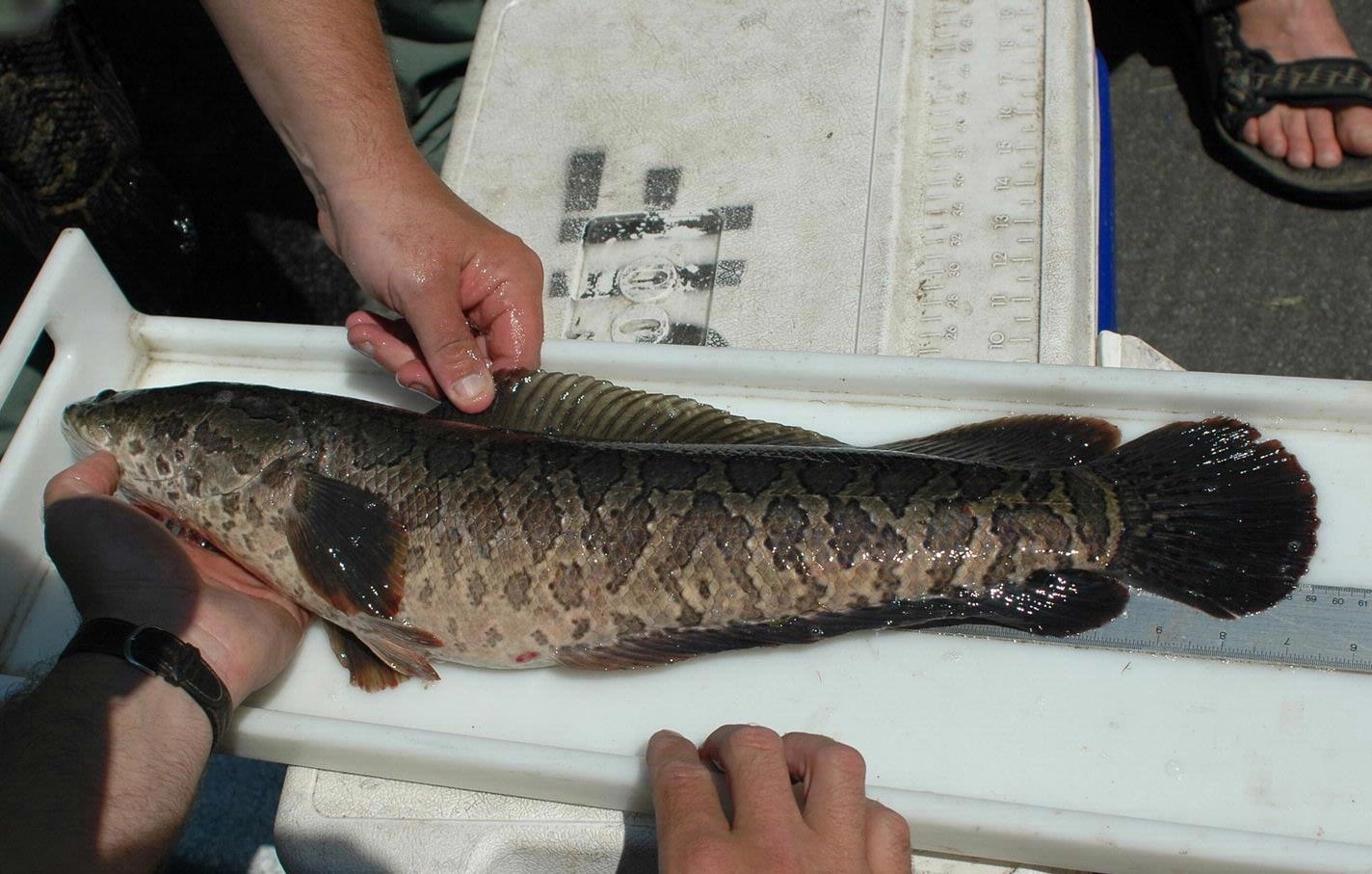
In addition to being opportunistic feeders, the northern snakehead can repopulate faster than other species. While there is a lot of food in the Potomac River, the concern is that a native species will have to compete for those resources as the northern snakehead population grows.
“Both parents guard the nest and they reproduce more than once in a season,” Groves said. “Most fish only reproduce once a year. Either one parent or no parent guards a lot of fish. But with snakeheads, both parents guard the nest and they reproduce two to three times a year. Their survival rate is fairly high.”
With all of the tributaries feeding into the Potomac, the idea of total eradication is nearly impossible.
“Unless you can really contain a species in one small area right off the bat, if you knew where they were coming from, eradication is a tough thing to do,” Groves said. “It becomes a management issue and trying to keep them out of areas that might be really sensitive.”
With this species, salinity is a limiting factor in preventing the snakehead from moving to other areas. But in years of heavy rainfall, researchers have seen this fish making its way into new areas as the saltwater is diluted.
Although the northern snakehead was not introduced for nefarious reasons, Groves said it’s important for the public to understand the impact nonnative species can have on an ecosystem.
“Don’t put anything into the creek, pond, or whatever that doesn’t belong there,” she said. “That’s where we get our biggest problems. A lot of times, people aren’t doing it for facetious reasons. They just don’t realize a lot of times these things live. “
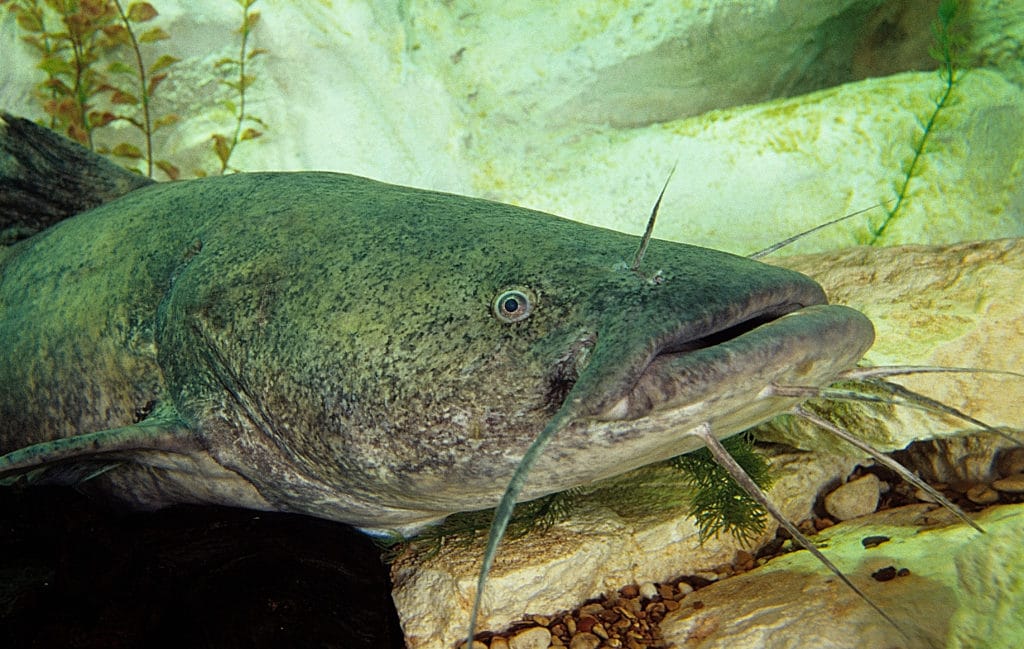
You often see this with the goldfish.
“You have a goldfish and after a while, your child doesn’t take care of it,” Groves said. “Mom or dad is always cleaning out the tank. So, they decide we’re going to release it, but we’re going to do it humanely. We’re not going to flush it down the toilet. We’re going to dump it in our ponds and rivers. The Potomac River is full of goldfish because people just dump them. They’re prolific. They can reproduce in that environment.”
When these waterways flood, you could unknowingly be spreading nonnative and potentially invasive species through the river system. Whether it’s a plant or animal species, take care to do your research before potentially introducing them into a new environment.
Things you can do to help stop the spread of invasive species:
The Center for Invasive Species and Ecosystem Health at The University of Georgia and The Lady Bird Johnson Wildflower Center created a few guidelines to help you minimize your impact and slow the spread of invasive species.
- Use native plants in your home and yard. This helps promote a healthier local ecosystem by providing food and habitat for native wildlife.
- Check your clothing, equipment, and vehicles for hitchhikers who may carry an invasive species to a new area. This includes using local firewood, purchased within a few miles from where you will be burning it, as outside wood could contain invasive insects or diseases not previously known to the area.
- Use weed-free seed mixes, soil, and mulch to guarantee the purity and content of the product.
- Pay attention to new plants as invasives can spread quickly. It’s best to stop their spread by acting quickly and early on while the infestation is easy to manage.
